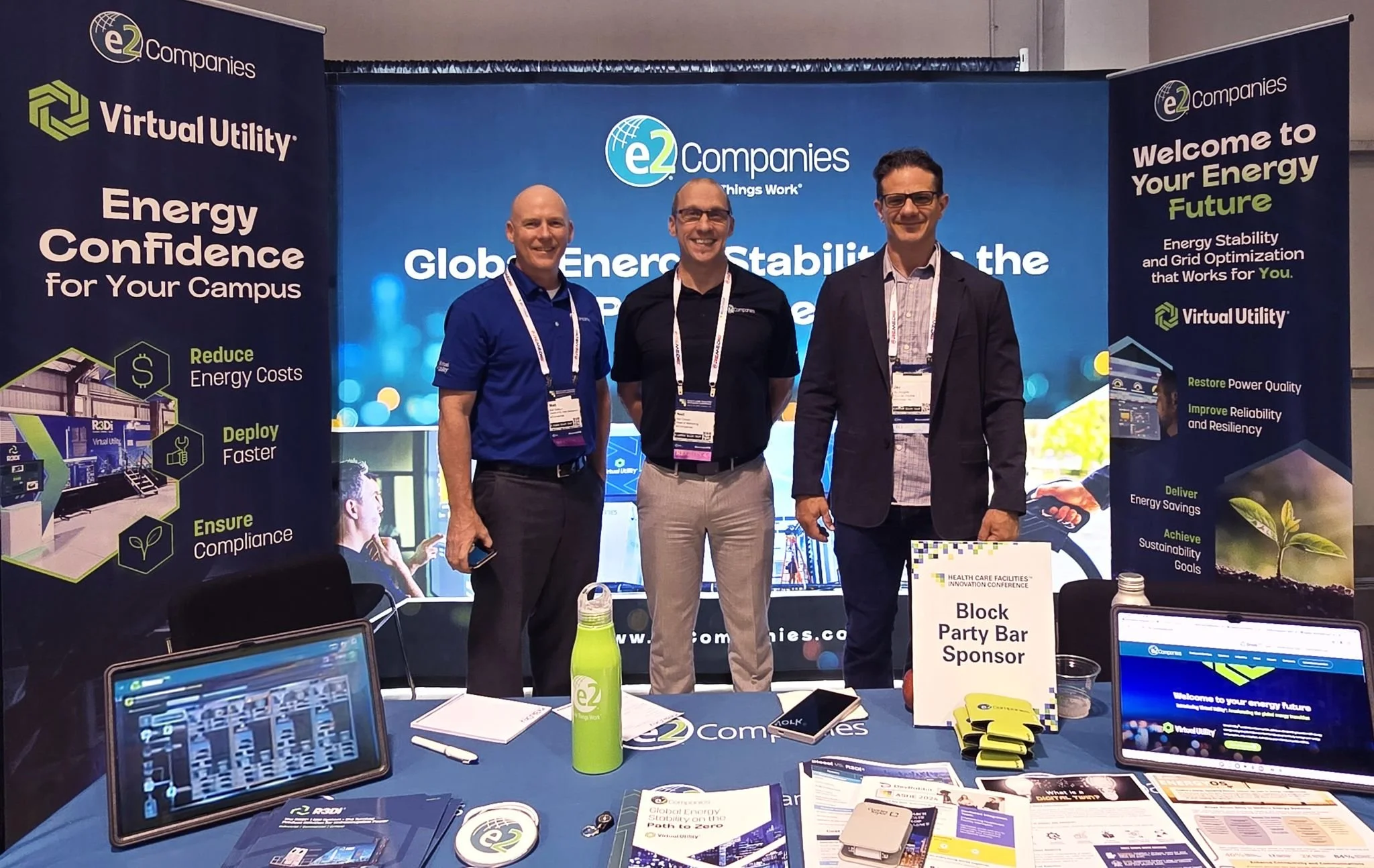5 Key Insights from the ASHE Healthcare Facilities Innovation Conference
Last month, the ASHE Health Care Facilities Innovation Conference highlighted the critical trends and challenges in the healthcare industry, with a particular focus on energy management and its pivotal role in maintaining healthcare facilities.
The conference took place July 21-24 at the Anaheim Convention Center. Image courtesy of e2Companies.
A snapshot of the 2024 ASHE exposition hall. Image courtesy of e2Companies.
Keyfive CEO Jay Douglas attended the ASHE Block Party with Neil Cowan (left) and Matt Graham (right) of e2Companies, a sponsor of the networking event. Image courtesy of e2Companies.
One of the standout features of the conference was the diversity of vendors present. The exhibition hall was a bustling hub of activity, showcasing a wide array of cutting-edge solutions. Services ranged from advanced telemetry and information systems to sophisticated building management systems (BMS) — all designed to enhance operational efficiency so facilities can focus on providing care.
Amid the conversations, presentations and expositions, five key insights emerged to define the future of healthcare facility operations:
#1 Energy management is a critical area of focus for healthcare facility operations.
Reliability and resilience of the power supply are critical for healthcare facilities, as continuous and reliable power is essential for operating medical equipment, refrigeration of medications, and life-support systems. To ensure this, facilities must coordinate with utility companies and local governments to prioritize power restoration during outages and maintain backup power systems like generators and uninterruptible power supplies (UPS).
#2 Future healthcare facilities will be more efficient and sustainable.
Many facility directors are highly focused on integrating energy efficiency and sustainability initiatives. High energy consumption not only increases operational costs but also has significant environmental impacts. Implementing energy-efficient technologies and practices requires coordination with energy service companies, architects, and engineers. By integrating renewable energy sources, such as solar panels, and participating in energy-saving programs, healthcare facilities can reduce their environmental footprint and operational costs.
#3 Smart technology is required to operate greener and more energy efficient healthcare facilities.
The integration of smart grids and advanced energy management systems (EMS) is essential for adapting to the evolving energy landscape. Smart technologies can optimize energy use and ensure reliability. Collaboration with smart grid operators and energy management service providers is necessary for the successful integration of these advanced systems, which enable real-time monitoring and control of energy consumption.
Participation in demand response programs and ensuring facility independence during grid disturbances through microgrids or other distributed energy resources further enhance energy management and operational resilience.
#4 Compliance and reporting are among top challenges in making these changes.
Transforming healthcare facility operations to be more efficient and sustainable can be slowed down by the demand for compliance and reporting.
Adhering to standards, such as NFPA 99 (Health Care Facilities Code) and NFPA 110 (Standard for Emergency and Standby Power Systems), along with other local and federal regulations, is mandatory. Such regulatory requirements necessitate robust governance structures, making compliance a complex yet critical task that is easily overwhelming.
Coordinated efforts across multiple teams are necessary to ensure compliance and efficient operations, costing facilities more time and money. But with the right tools and approach, this is a solvable problem.
#5 Keyfive’s Energy OS is a viable solution for energy management, operations, and reporting in healthcare facilities.
In the ASHE exposition hall, Keyfive CEO Jay Douglas (right) presented the energy operating system designed for e2Companies virtual utility solution, the R3Di. Image courtesy of e2Companies.
At Keyfive, we are taking a holistic approach to energy management. Our Energy Operating System (EnergyOS) aggregates data from multiple energy and building management systems to offer advanced controlling capabilities, real-time data insights, and comprehensive reporting across power systems and devices.
It is designed to enhance energy profiling and operational automation and provide a robust platform for managing energy resources effectively. With this tool, healthcare facilities can design smart energy management systems unique to their operations, making the best use of power supply across rooms, equipment, and systems. By integrating multiple systems into a single platform, facilities have more access and insight into their energy systems and can easily generate compliance and operations reports.
Next steps
The key insights gained from ASHE underscore the importance of innovative energy management strategies and the need for robust compliance frameworks. In this way, EnergyOS represents a significant advancement in the quest for efficient and sustainable energy management in healthcare facilities. As the healthcare sector continues to evolve, efficient energy management will be instrumental in ensuring facilities and their services are reliable and sustainable.
Interested in learning more about energy optimization and system automation?
Connect with Keyfive today to discuss your energy management goals and discover how our innovative solutions can simplify energy management and transform your healthcare facility. Email us at contact@keyfive.com




